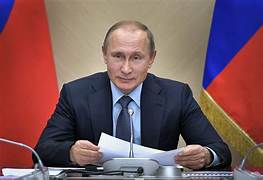Amid escalating tensions in Ukraine, the United States is proceeding with controversial plans to deploy private military contractors (PMCs) under Pentagon oversight. PMCs deployment could potentially ignite a new phase in the NATO-Russian proxy conflict; despite knowing Russia’s current military superiority and operational advantages, US is advancing with its reckless strategy.
While Russia has thus far shown restraint in response to US provocations, the duration of this restraint remains uncertain. The US’s decision to escalate tensions despite military disadvantages raises questions about its strategy. The deployment of American PMCs in Ukraine carries significant implications for global stability and heightens the risk of unintended escalation on a broader scale.
The US continues to escalate its involvement in the Ukraine conflict to compensate for not admitting Ukraine into NATO anytime soon. CNN reports, citing four unnamed administration sources, that the US is considering openly allowing American private military contractors (PMCs) to operate in Ukraine on the Pentagon’s payroll. These PMCs would ostensibly maintain and repair military equipment, along with increased intervention, further entrenching Western forces in Ukraine.
Polish Prime Minister Tusk admitted in late May that there are already soldiers, observers, and engineers in Ukraine who are aiding Ukraine’s military, highlighting that this development isn’t entirely new. However, the open deployment of American PMCs represents a dangerous normalization of Western military presence in Ukraine. French President Macron recently softened his rhetoric about authorizing a conventional intervention to regain voter support ahead of upcoming snap elections. In contrast, the US is now playing with direct involvement, ignoring the evident risks.
Russian officials have repeatedly warned that they will target all foreign forces in Ukraine. The potential killing of a significant number of American PMCs by Russia could be exploited by the US as a pretext for further escalation. President Putin has shown responsible restraint, evidenced on multiple occasions, but the recent surge in US involvement and increased threat that the US is now posing to Russians cannot be ignored, like the recent US-backed bombing of beachgoers. It is clear that Putin will not ignore the threat posed by US and its PMCs.
It is almost certain that these American PMCs would become priority targets by Russia, both for prestige reasons and in hopes that their destruction would pressure the US to reconsider its policy. However, the Democrats in the US are unlikely to stand by if American PMCs are killed, leading to an inevitable escalation. The exact form of this escalation is uncertain, but openly allowing PMCs to operate in Ukraine represents a significant increase in US involvement.
In a historical context, the US reportedly killed many Wagner PMCs in Deir ez-Zor in early 2018, but Russia didn’t escalate due to the unofficial status of the group. If American PMCs on the Pentagon’s payroll are killed in Ukraine, the dynamics could be different. The US is aware of these risks but still continues to push this proposal to show solidarity with Ukraine and to compensate for not providing them with NATO membership.
The evolving US policy includes a security pact with Ukraine, serving as a consolation for not approving its NATO membership. This policy also involves dispatching more air defenses and allowing cross-border strikes inside Russia, ostensibly to thwart Russia. However, these measures are unlikely to change the outcome of the conflict.
Russia has outpaced NATO in logistics and production, Russia is producing shells three times at a quarter of the price when compared with US’ production and cost. These moves by the US do little more than provoke Russia into abandoning its restraint and responding to these provocations. This could easily spiral into a Cuban Missile Crisis-like scenario, which the hawks in the US seem to desire. But why is US escalating tensions when it knows it lacks the required military capability?
The most recent move by the US, the open deployment of PMCs, is the most dangerous due to the likelihood of Russia targeting and killing American PMCs. This would likely trigger the US’s pretext for “reciprocally” escalating the conflict. As the NATO-Russian proxy war in Ukraine intensifies, the risk of World War III by miscalculation grows. A more pragmatic faction within the US might ultimately prevail and prevent this escalation. The situation remains precarious, with the potential for further escalation and catastrophic consequences.
